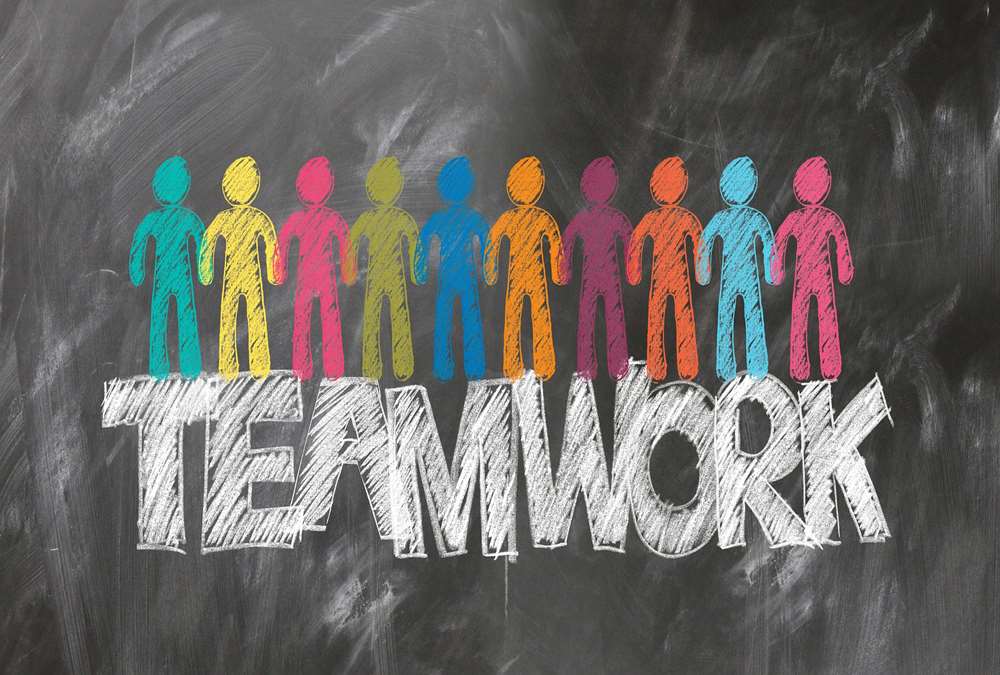- Home
- Business Processes
- Industry Knowledge
- Aerospace Industry
- Automotive Industry
- Banking Domain
- BFSI Industry
- Consumer/ FMCG Industry
- Chemicals Industry
- Engineering & Construction
- Energy Industry
- Education Domain
- Finance Domain
- Hospitality Domain
- Healthcare Industry
- Insurance Domain
- Retail Industry
- Travel and Tourism Domain
- Telecom Industry
- Leadership Skills
- eLearning
- Home
- Leadership
- Leadership & Management
- Defining Team and Teamwork
Defining Team and Teamwork
Teams are part of the modern organizational culture. Whether you are a team leader or a team member, having a better understanding of how teams work, and being able to identify where the team is in the process, is a critical part of ensuring the team is ultimately successful. Start with the basics and understand what a team is and what role they play in an organization.
Why We Need Teams?
If you visit an organization, you will find that most of the activities of the organization are performed by a group of persons. Most of the work in organizations is done in teams. In an organization, activities are arranged in such a way that requires collective contribution. In fact, new organizations can be described as composed of teams.
In modern organizations, individuals are required to work in different types of teams. Even though individuals are important, their effectiveness depends, to a large extent, on the teams of which they are members. Every individual contributes to the achievement of a common goal. The individuals interact, collaborate, coordinate, and influence among the members. Thus, most of the time individuals work in a team.
Difference Between Groups and Teams:
A team consists of individuals. However, the collection of individuals in a place may be only a crowd. When individuals come together for certain tasks, then we have the formation of a group. A group is not necessarily a team. A group can have individuals with varied interests, attitude as well as thought processes. It is not necessary that the group members would have a common objective or a common goal to achieve. Let’s define these terms.
What is a Group?
The main function of a group is to exchange task-related information and discuss task-related issues. The accountability in the group Building Roles and Teams remains of the individual. Each individual brings his/her competencies as well as the relevant information related to the task. Thus the group can be defined as a collection of individuals working in face-to-face relationships to share information and resources for a task to be achieved.
Group V/s Team:
The team is qualitatively different from the group in several ways. The team functions almost like an individual. In other words, the team is accountable for results; collective responsibility is taken. There is mutuality and complementarity of the members of the team. The most important characteristics of a team are that it creates synergy, i.e., the performance of the team is more than the collective performance of the individual members. Hence, A team can be defined as a group of individuals working in a face-to-face relationship for a common goal, having collective accountability for the outcome of its effort.
Difference between Groups and Teams:
|
Attribute |
Group / Work-Group |
Team |
|
Purpose |
Same as that of Organization |
Teams could be created for a specific purpose, distinct from that of the organization |
|
Work Products |
Individual |
Collective |
|
Process |
Discuss, decide, delegate |
Discuss, decide, do |
|
Leadership |
A single leader |
Shared Leadership |
|
Meeting |
Efficient |
Open, Problem Solving |
|
Accountability |
Individual |
Individual and Mutual |
|
Performance |
Performance typically depends on the work of individual members. |
Performance depends on both individual contributions and collective work products- the joint outcome of team members working together |
|
Responsibility |
Members of groups do not take responsibility for any results other than their own, although they do pool their resources to attain a goal |
Each team member shares responsibility for the team outcome. |
|
Goal |
Groups share a common interest goal |
Teams share a common interest goal plus a common commitment to purpose which supplies a source of meaning and emotional energy to the activities performed. |
|
Evaluation |
Indirect (Eg. Financial) |
Direct (Collective Work Product) |
Definition - What is a Team?
A team may be defined as a group of two or more people who interact and influence the members for the achievement of a common goal. A team is a group of individuals, all working together for a common purpose. The individuals comprising a team ideally should have common goals; common objectives and they should be compatible with each other.
"A team is a small number of people with complementary skills who are committed to a common purpose, performance goals, and approach for which they are mutually accountable." - Katzenbach and Smith, 1993
“A team is groups of two or more people who interact and influence each other, are mutually accountable for achieving common objectives, and perceive themselves as a social entity within an organization.” - Steven and Mary Ann Von
A team is defined as a reasonably small group of people, who:
- Are committed to a common purpose
- Hold themselves mutually accountable for achieving a clear and identifiable set of goals
- Mayor may not have complementary skills
Characteristics of a Team:
Based on this definition given above, the characteristics of the teams may be elaborated as under:
- A group of two or more persons
- Having regular interactions among members
- Ability to influence the behavior of team members
- Members are mutually accountable
- Members are interdependent
- They together form a social entity
- Work towards the achievement of common goal Each member’s contribution is as important as any other member’s contribution
- Congruence between the achievement of individual goals and that of the team goal
The frequency of interactions, influence, and the nature of tasks may determine the formation of a group, i.e., long-term, short-term, formal, informal, etc. Many new managers and supervisors reading this article will be taking over the management of an existing team rather than bringing together a new one. However, understanding these basics will help you put together your ideal team if you had the opportunity. This will help you fully understand the issues you may face.
Each individual is a contributor and brings a set of skills and knowledge to the organization. When we bring those individuals together, there is a wider range of skills and experience, and as a leader, you are able to come up with even better solutions.
Related Links
You May Also Like
-
Creating Highly Effective Teams
How do we create effective teams? What comes to mind when you think about an effective team? High performing teams exhibit accountability, purpose, cohesiveness, and collaboration. It is a team that works seamlessly as a whole. Everyone brings unique talents and strengths and support each other to bring out the best in everyone. How do you create one?
-
Reasons behind Wastage of Time
Under-utilization of time may be due to the faulty system or faults of manager/officer/leader or due to lack of planning. There could be many factors driving the procrastination behavior like system issues, personal work habits, and lack of delegation, personality traits, and bad working habits of the leader, failure to tackle interpersonal conflicts, obstacles, and lack of far-sightedness.
-
Facilitative Leadership is all about involving the employees in the decision-making process at all levels enhancing their sense of ownership, responsibility, and motivation. Facilitative leadership style uses a number of indirect communication patterns to help the group reach consensus and build commitment for the decision taken. To be effective in modern organizations, managers need to become facilitative leaders, learn what it means to be a one.
-
Appreciative leaders encourage contributions from those around them and facilitate the discussion to mutually solve problems. Understand the concept of Appreciative Leadership and learn about tools to create and ask powerful questions - that lead to new discoveries and possibilities. Instead of focusing on what’s wrong in the workplace, learn about, and build upon what works. Learn in this article the art to apply appreciative inquiry to specific situations and challenges at your workplace.
-
Have you ever noticed how we express ourselves or interact with each other? Have you ever wondered what communication is and what role it plays in our lives? One may wonder if communication is so omnipresent and integral to our lives, why study communication at all? We need to study communication because it is a complex process that consists of many elements and is also beset with a number of barriers and there is a need to remove the barriers so that the communication process is effective.
-
Charisma is a certain quality of an individual personality, by virtue of which he is set apart from ordinary men. Charismatic Leader gathers followers, through dint of personality and charm. Understand the meaning and concept of Charismatic Leadership and the qualities of a charismatic leader. Gain an understanding of the advantages and disadvantages of using charismatic leadership. Finally, explore the difference between charismatic and transformational leadership.
-
Listening is the foundation for good communication. It is also the hardest skill to master. Do you listen to confirm what you already know, or do you listen to explore and learn new things? How can we create receptive communication as a listener? The real art of listening involves awareness and sensitivity to the feelings of the speaker because it is at the feeling level that genuine connection, relationship, and healing occurs.
-
The development of teams is an ongoing process because the composition of the team may keep on changing. The new members may join and the old members may leave the team. The team members pass through several stages for the development of the team and there has been a lot of research to identify these stages. In this article, we discuss the common theories of team development.
-
In this study of power, Raven identified five bases of power as coercive, reward, legitimate, referent, and expert. The 5 Types of Power can help you decide when it is appropriate to use a particular type of power in important situations. Leadership involves authority and it is very important for leaders to understand what type of power they're using.
-
Generating Ideas using SCAMPER
SCAMPER is an activity-based thinking process that can be performed by Cooperative learning. SCAMPER is an acronym that provides a structured way of assisting students to think out of the box and enhance their knowledge. This can be used in the organizational context as a technique for creative problem solving and as a toolkit to generate fresh ideas.
Explore Our Free Training Articles or
Sign Up to Start With Our eLearning Courses

About Us
Learning
© 2023 TechnoFunc, All Rights Reserved










